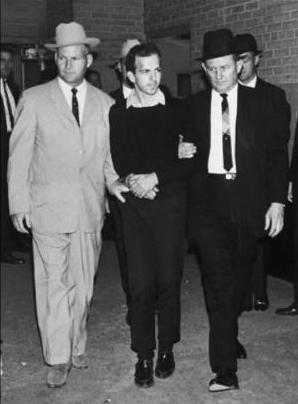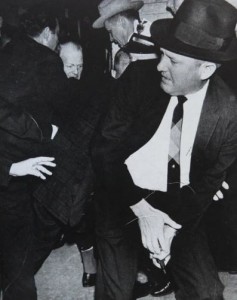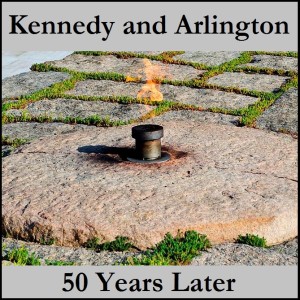An Eyewitness to Oswald’s Final Moments
In a four-part series, Preservation Arlington looks back at the assassination of President John F. Kennedy, which had a major impact on Arlingtonians, and all Americans, and which culminated in Kennedy’s funeral, which indelibly changed the face of Arlington National Cemetery.
For this third piece, we hear the amazing story of Arlington resident Frank Johnston, a former press photographer for United Press International and the Washington Post. Johnston was facing Kennedy’s assassin, Lee Harvey Oswald, when he was shot by Dallas nightclub owner Jack Ruby exactly 50 years ago on November 24, 1963.
I’ve lived in Arlington for over 45 years and spent most of those years as a press photographer for the Washington Post, retiring in 2004. During my career, I was often on assignment with the Kennedy family in Washington, D.C., but it was in my first six months on the job as a photographer for UPI (United Press International) in the Austin, Texas, bureau that I became linked to the Kennedy story for the rest of my career.
President Kennedy was in Texas for a series of events stretching from San Antonio to Houston and Fort Worth and then on to Dallas, which included a big Democratic fundraiser for Governor John Connally. Along with other photographers, I was asked to cover the trip. When the group was ready to move on to Dallas, however, my bureau asked me to stay back in Austin. On Friday, November 22, I had just walked into the office when an “eight-bell” came across the wire, indicating a “flash” story — something extremely urgent had happened.

(Photo courtesy of Frank Johnston/UPI)
Once we learned the news, Jim Southerland, the Austin Bureau Chief for UPI, convinced his friend, who was the head of the Texas Rangers, to give us a lift to Dallas. As the tiny four-seater plane touched down at Love Field, the pilot turned on the radio and we listened to the swearing-in of President Lyndon Johnson. As we taxied in, we could see Air Force One over to the side by one of the hangars.
Looking for the story, I went down to the jail and the courthouse. I had heard that the suspected assassin, Lee Harvey Oswald, was going to be moved from the jail to the courthouse for arraignment on Sunday, November 24th. I waited in the basement driveway of the jail, with only a handful of others, when Oswald was brought out (most of the other reporters were already at the courthouse).

(Photo courtesy of Frank Johnston/UPI)
Oswald was handcuffed to Dallas Police Detective Jim Leavelle as they were walking through the basement area. I didn’t know it, but standing behind me was Jack Ruby. Suddenly, Ruby pushed me and another man aside, called Oswald “You S.O.B.,” and shot Oswald.
Although my Dallas Times Herald colleague Bob Jackson got the famous photo of the moment of impact (which won the Pulitzer Prize), I was able to capture one of the last pictures of Oswald before the shooting, as well as another photo of a Dallas police detective holding the gun shortly after the shooting. NBC had a camera crew there too, and I believe that it was probably the first spot news story by a major network.
As one of only a handful of eye-witnesses to the Ruby killing, I stayed involved in the case for some time. When I returned home to Austin, both the FBI and the Dallas police were waiting for me at my apartment. I was also subpoenaed to be at the Ruby trial. And my testimony is part of the Warren Commission Report (officially, The President’s Commission on the Assassination of President Kennedy).
After working in Texas, Philadelphia, and Vietnam, I ended up in the New York office of UPI. When Ben Bradlee took over the Washington Post in 1968, Bradlee asked me to come to Washington. I covered a wide range of important news events there (such as the People’s Temple tragedy in Jonestown) and also continued to cover public aspects of the Kennedy family. I was frequently on the road with Kennedy family members for campaigns and speeches, but I also found myself with the family in personal moments, such as a birthday party for family matriarch Ethel Kennedy.
I moved to Arlington when I came to the nation’s capital to join the Post. This is one of the best places to live and retire.
Watch Frank Johnston in a Washington Post video interview about that fateful day in Dallas below.
